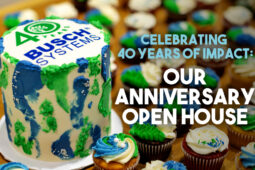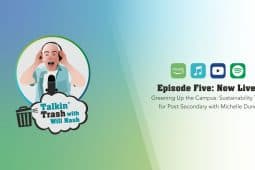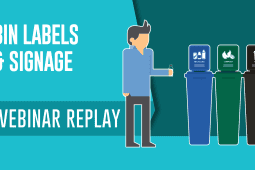How to Set Up a Recycling Program at the Office
Introduction
As the founder of the German Green Party, Petra Kelly once said: “If we don’t do the impossible, we shall be faced with the unthinkable.” It is time we answered Kelly’s call to action and set into motion the necessary steps to revitalize the earth, such as integrating recycling programs within local communities. The mere practice of generating new uses for discarded materials conserves natural resources, reduces air pollution, saves energy and downsizes landfills. For example, if everyone in the country recycled a newspaper a week thirty-six million trees a year would be saved.
There are six steps involved in setting up a recycling program at the office:
- Consult a waste collection service
- Determine what is needed
- Gather equipment
- Organize
- Roll out the program
- Maintain program
This guide will outline each of these steps in detail and how to use them to implement a successful recycling program.
![]()
Step 1: Consult a Waste Collection Service
Before introducing a program determine what type of recycling is possible for the area. Contact local businesses and find out who collects waste and recyclables in the area. When contacting the companies evaluate their customer satisfaction and collection costs, as well as, determine if neighboring businesses are interested in sharing recycling services.
Each community has a different procedure for collecting recyclables. Find out from the waste hauler what the collection requirements are in the area including:
- What types of materials are collected
- How materials are separated
- What color schemes are used
- What types of containers are accepted
- When are materials collected
- How much does it cost
- What sort of areas work with the collection trucks
- What happens when the program requirements change
![]()
Step 2: Determine What Is Needed
Determine how much and what type of waste is generated in the office. Apply it to the specifications provided by the hauler and the anticipated level of traffic for the area. Together this information will provide what is needed for the recycling program to run. For example, an office environment may require desk-side recycling bins or large capacity centralized collection containers. The type of recycling bin which will work best will depend on how often it will be emptied, the number of employees contributing to it, possible janitorial services and the size of the area.
An excellent way to determine what is needed for a recycling program is by seeking the input and approval of those in the space. Applying the advice of others can encourage future program use. It can also ensure that an appropriate recycling program is selected by those who will be using it.
![]()
Step 3: Gather Recycling Equipment
Now that the particular needs of the program have been determined the equipment can be purchased. Consult a recycling bin manufacturer for program ideas and container solutions. Ensure that the containers selected are easy to use, efficient and environmentally sound.
Easy to use recycling containers should be versatile and custom designed to work with any environment. There are different bin features available which make participation in a recycling program easier such as:
- Mountable bins for increased surface space
- Deskside bins for increased leg room
- Stackable containers for easy storage
- Large wheeled or lidded containers for easy transportation
Select the container which makes the most sense for the area it will be placed.
Containers should feature the correct combination of visual indicators and sorting mechanisms to maximize the ease in use. Use clearly marked labels, shaped deposit slots and different color options. These tools will allow employees to identify quickly what the bin is designed to collect.
Implementing plastic containers which are environmentally sound can assist a recycling program. Select containers which are 100% recyclable, made with a minimum of 35% recycled content and complimented by matching waste baskets. Containers meeting these requirements will maximize the results of an office recycling program as they have green solutions built right in.
North American made containers have a reduced impact on the environment. Local products will reduce air pollution resulting from overseas shipping and toxins from foreign containers. Also, if the recycling bins are within arm’s reach they will be easier to replace or distribute in the future should new containers be needed.
![]()
Product Recommendations
Busch Systems offers an extensive line of recycling and waste container solutions. The type of bin to select for an office environment will depend on how it will be used. There are four categories to consider when choosing office recycling containers: individual, shared, outdoor and secure. Listed below are product recommendations for each type:
- Individual recycling containers best service areas occupied by one person, such as office desks or workstations. The product best suited for this category is the ‘Deskside Recycling Bin’. The container is custom designed to fit seamlessly under desk drawers and can contain upward of three gallons of recyclables. This bin is also available with a matching waste basket which can be hung alongside it.
- Recycling containers designed for shared use target standard office facilities, such as lunch rooms or staff lounges. The ‘WasteWatcher’ series is ideal for such an environment. It is space efficient, high capacity and utilizes simplified sorting mechanisms.
- Outdoor recycling containers are for exterior office use, such as, building entrances and smoking areas. The ‘Four in One HD’ recycling bin is best suited for this category as it has various collection slot options and fitted liners. This container consists of four compartments which are all able to collect twenty-three gallons of waste or recyclables.
- Secure document storage containers are available for internal office use. The ‘Shredinator’ series is equipped with tamper proofing mechanisms, different size options and are able to slide seamlessly beside or under desk drawers.
These are only a few of the recycling container solutions offered at Busch. To view the complete line of equally attractive alternatives please visit: www.buschsystems.com.
![]()
Step 4: Organize the Recycling Program
After a container is selected it must be incorporated into a well organized recycling program. The first step is assigning a program coordinator. This should be someone in the office who is interested in taking charge of the program. Once the coordinator is made aware of their responsibilities they can ensure that the recycling program is always running smoothly.
The new candidate can begin their duties by selecting where the containers should go. When deciding where bins should be placed bear in mind other containers which may be in the environment, traffic, capacity and collection. The scheduling of container collection may be the deciding factor in determining where the bins should go. Placement options may be limited depending on the size of the collection vehicle and the accessibility of the area.
Suggested Green Initiatives
Once the collection of recyclable material has been arranged other green initiatives can be considered. Listed below are a few suggestions for green office practices:
- Setting photocopiers to print on both sides
- Making computer files not paper files
- Reusing envelopes
- Creating scratch pads out of used paper
- Buying recycled toner cartridges
- Encouraging the use of reusable lunch boxes, water bottles, mugs and containers
- Encouraging employees to carpool, bike or walk to work
![]()
Step 5: Roll Out Program
Following the development of a recycling program is the execution. For the program to run smoothly, the end user must be educated on how it operates and understand what the goals are. Rolling out the initiative will get those sharing the space excited about the program and motivated to use it.
Organize a meeting to roll out a recycling program at the office. Distribute promotional materials, such as, miniature recycling containers filled with program goals and contact information. The goals should include current and projected statistics for the recycling program. The contact details should include the name, location, and description of responsibilities of the program coordinator. Throughout the meeting encourage staff to discuss the program and interact with the coordinator. This will allow others to offer suggestions for improvement.
![]()
Step 6: Maintain Program
Maintaining a recycling program is a critical component to ensuring its longevity and success. A large part of the upkeep process will be the responsibility of the program coordinator. They will need to constantly monitor the effectiveness of the program and find ways to improve it. The coordinator will also be responsible for keeping those in the facility enthused and new employees educated on the program procedures.
There are several ways a program director can keep up enthusiasm at the office. For example, a record of the number of recyclables leaving the facility can be stored, and statistics can be generated from the materials recovered. These statistics can be presented to staff monthly with program update emails congratulating them on a job well done.
![]()
Conclusion
In conclusion, the combined usage of the above six steps will enable an office facility to incorporate an effective recycling program. The program should work toward conserving our natural resources and safeguarding our environment. Ideally, a new recycling program will allow future generations to flourish in what we have instead of flounder in what we have left behind.
![]()






